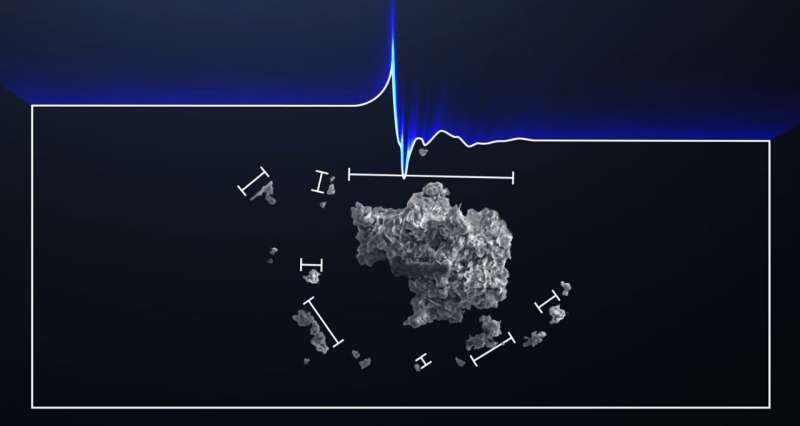Astronomers map interstellar dust grains in Milky Way

Between the stars in our Milky Way, vast amounts of tiny dust grains are floating aimlessly around. They form the building blocks of new stars and planets. But we still don't know what elements exactly are available to form planets like Earth. A research team at SRON led by Elisa Costantini has now matched observations from X-ray telescopes with data from synchrotron facilities to create a map of interstellar grains in the Milky Way.
If our galaxy shrank to the point where stars were the size of marbles, there would still be about a thousand kilometers between each of them. So it is safe to say that galaxies consist mostly of empty space. Still, this space is not as empty as you might think. It is filled with the so-called interstellar medium. The larger part of this is made up of tenuous gas, but around one percent is in the form of tiny grains of about 0.1 micron—one thousandth the width of a human hair.
These grains are formed during the life cycle of stars. A star, and the planets around it, are formed by a collapsing cloud of gas and dust. When the star evolves toward the end of its life, it expels a good fraction of its mass in the surrounding medium, creating new material for dust formation. If the star ends its life with a supernova explosion, it will further enrich the environment with even more gas and dust. This in turn will eventually constitute new building blocks for stars and planets. As Carl Sagan said, "We are made of stardust." But what elements exactly are available in the interstellar medium to form planets like Earth is still unknown.
The interstellar dust research group at SRON Netherlands Institute for Space Research, led by Elisa Costantini, has now studied the interstellar grains in our Milky Way using X-ray radiation. They were able, for the first time, to explore the properties of the dust in central regions of the galaxy, and found that those grains are consistently made of a glassy silicate: Olivine, which is a compound of magnesium, iron, silicon and oxygen. The interaction with stellar radiation and cosmic rays melted these grains to form little glassy irregular spheres. When moving further out to more diffuse regions away from the galactic center, the team found clues for the presence of a larger variety in dust composition. This may give rise to diversified planetary systems. It might even be that our planetary system is the exception rather than the norm.
Costantini comments, "Our solar system was formed in the outer regions of the galaxy and is the result of a complex sequence of events, including nearby supernova explosions. It remains an open question what is the right environment to form planetary systems and which of these events are vital to form a planet where life can flourish."
To get to their results, Costantini and her group matched observations from X-ray telescopes and synchrotron facilities. They used the latter to characterize the features that interstellar dust analogues like silicates, oxides and sulfates produce in X-rays. Then they compared these to the astronomical data to find the best matches. Observing several lines of sight allowed them to explore different environments of the Milky Way.
The research team used using the synchrotron facilities Soleil-LUCIA beamline, the Dubble-ESRF beamline and the Titan electron microscope at the University of Cadiz. On the astronomical side, they used the X-ray observatories XMM-Newton (ESA) and Chandra (NASA).
Provided by SRON Netherlands Institute for Space Research





















